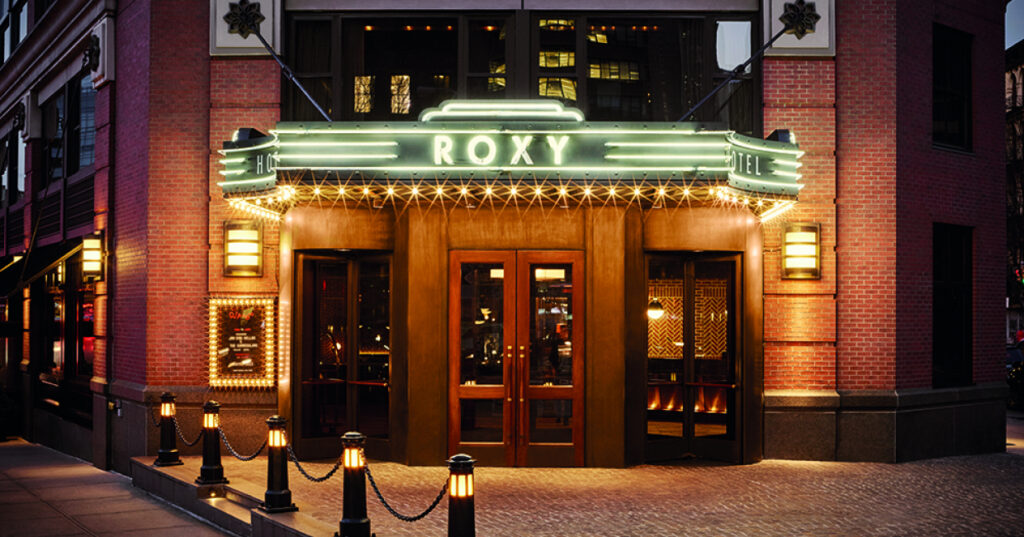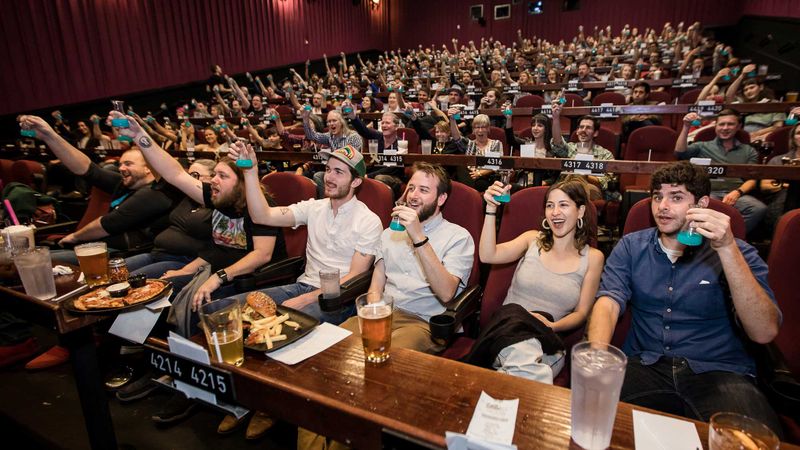Movie Theaters Are Making a Comeback?

Last year the future of the movie house looked pretty dark.
Every theater in the country was locked down for most of last year. American theater chains hadn’t been doing well before the trouble started, so losing 100% of their income for months on end looked to be an extinction-level event.
I’ve gone over this stuff before but if you’re a new reader you might have missed it. My old readers can skip down to the last few paragraphs.
Theaters have been in an abusive relationship with the film studios for decades.
When the multiplex models pushed out the single screen Roxies in the 1970s it was a major improvement for the distribution side of things. Income was pretty steady, with some seasonal dips and high points. You would never see the same film on more than one screen. You have to remember that this was before home video. So a theater could keep a movie on screen for months and it would still sell tickets because it would take literally years before a movie was on TV. So if you wanted to watch The Sting six months after it was released it wasn’t hard to find a theater that was still running it.
Then came the VCR. At first, it was only B-Movies that would be released on home video. Only cheap movies or theatrical failures went to video. The good stuff was reserved for theatrical rerelease. This created the 1980s phenomena of the home video hit, like Terminator, Tron, and Blade Runner.
However, there wasn’t much of a home video market, tapes were priced with video rental shops in mind. When Star Wars was released on VHS in 1984 it cost $80 ($230 adjusted for inflation), and it was supposed to be For Rental Only. The Moguls couldn’t bring themselves to face the fact that the rerelease market was dead.
The problem the studios were refusing to look at was that it was super easy to jailbreak the copy protection on a videotape. Everybody knew somebody who could do it.* America took to the high seas with a vengeance. No matter how many stern warnings from the FBI were on a videotape. To the best of my knowledge, enforcement never happened.
The last release with a back-breaking price was in 1991 with Hunt for Red October for $90 ($180 adjusted) and it was destroyed by Total Recall with a price of $25.
At that point, the Moguls accepted reality, gave up and started pricing films for the home market and kinda-sorta selling them on having much better quality than a pirated tape (which was actually true).
But the big change was for the theaters. It wasn’t taking years before something came out on tape anymore. Worse still, the budgets on movies started to go way up which meant that the studios were producing less of them every year. By the mid-90s a big summer release would be taking up a number of screens at a multiplex because (a) there was no competition for that designated weekend all the other studios had moved off it and (b prime) the theaters had to show something.
In 2006 the average price for a DVD was fifteen bucks. At that price, it made more sense to buy a movie than risk Blockbuster’s brutal late fees.
Now, Studios wanted to get their product to the home market as fast as possible so the DVD release window was lowered from six months to three. That killed the $1 movie houses.
Knowing they were in full control of the exhibition market the studios started putting the screws to the theaters in a serious way. The studios were very much an oligopoly, and by twenty-teens, they acted like it. The theatrical split was very rough on the theater chains. When Disney said, they were taking a much bigger split for the Force Awakens the theaters had to swallow it.
“The money the studios get from the theaters is on a sliding scale. During the opening week the studios get a criminal 90% of the revenue. With the box office take shifting toward the theaters in the next few weeks of release. Ideally, this works out to something like a 50/50 split in the end with the studios using the early lion’s share to retire the junk debt they used to finance the movie.
The problem for the theaters is, what happens if the second- and third-weeks box office crashes through the basement?
Imagine how happy the theaters were with Ghostbusters (2016)? Or John Carter? Or Cats? Bombs hit the theaters a lot harder than they used to.
On top of that, the studios are gobbling each other up. That means the films aren’t competing with each other like they used to on the grounds that the studio doesn’t want to eat its own lunch. Consequently, there are a lot less big tent poles coming out. And means that the theaters are making less and less money per screen, so, they must raise the prices (ticket price averages are up 105% over the past twenty years).
Which means they sell less tickets.
Which means they make less money.
Which means they have to raise the prices.
Rinse and repeat until the nickelodeon collapses.
In 2020 theaters basically begged the studios to give them anything so they could survive the lockdown. Delay releases, use your leverage to get us breaks from the government or the banks. Or failing that just buy us up. It’s legal for you guys to own theaters again, remember?
The studios reacted to these pleas by releasing their 2020 tentpoles on streaming. They didn’t care about the theaters anymore. All of the moguls were chasing the twenty-billion-dollar dragon by then. They were all convinced that streaming was the future and that as soon as they bit into Netflix’s market share they would be living like god-kings.
It looked like the end for the theater chains.
But the theaters survived long enough to get a Biden bailout and now the studios are facing a real problem with the exhibitors. The theaters survived, just barely, without the studios. So, now they know they don’t need the studios as badly as they thought they did.
The studios to their horror have been informed that none of the theaters will keep a movie on their screens more than 45 days. Not one day longer. The high rotation rate helps the theaters since most of the money from a film’s release is made in the first few weeks. This also protects the small production companies who kept the theaters in business during the great pestilence. Finally, the split isn’t going to be anywhere near where it was before the plague rolled into town.
The film studio oligopoly has been severely damaged by Covid.
AMC is now taking a very aggressive post-pandemic position in the market, they are spending millions on upgrades and lease acquisitions.
Drive-ins that had been open on weekends only for decades have been running seven nights a week. I don’t know if that is the start of a general renewal for the drive-in, but I don’t know that isn’t. Zoomers seem entranced with them. Pay for your ticket online, use your car’s stereo system, (which is better than the TV’s soundbar). And get your chow from Grubhub, delivered to your car by a carhop. What’s not to love?
Finally, the premium experience movie chain Alamo Drafthouse is out of bankruptcy and looking to open new theaters in New York City. For those who aren’t familiar, Alamo spends big on its audio-visual equipment, serves its patrons real food at their screenings, and has huge reclining chairs.

Honestly, what won me over was Alamo’s brutal policy on talking and texting during a movie.
Bottomline: the movie theaters are back and are stronger for the studios having abandoned them.
Okay, I’m done here.
* It was so easy to defeat Macrovision, I did it by accident. I had a VHS tape player for rentals and a Betamax for TV recording. I was in college and used Beta machines were extremely cheap by then. Anyway, I had set the Beta to record something, and it clicked on without my noticing. I was pissed when I saw that little red little light, because I was convinced that I had an hour of gibberish. Instead, I had a pristine hour of Return of the Jedi.

